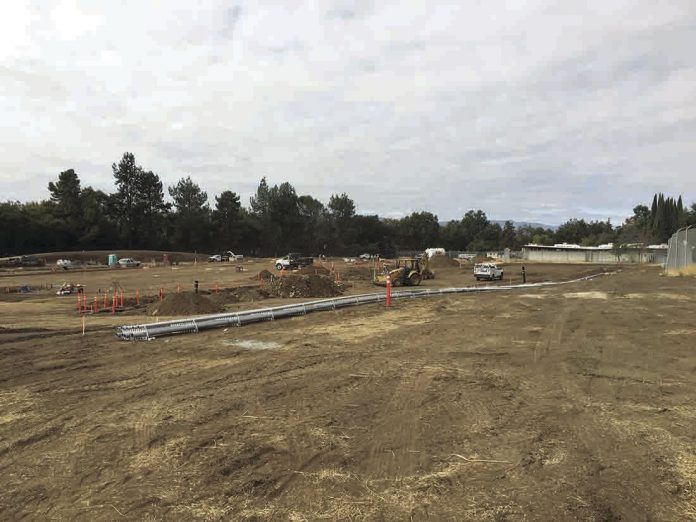
With more than eight years of planning and preparation under their belts, Santa Clara County has finally begun a vast, $26 million makeover of the William F. James Ranch juvenile detention center in northeast Morgan Hill.
Officials say the expansion, which will increase the ranch’s detention capacity from 84 to 108 beds, will replace the much older buildings on the property off Malaguerra Avenue with more modern, efficient facilities. It will also make it easier for James Ranch staff to provide the wide range of services offered on site for youth offenders—including education, counseling, mental health services, life skills and more.
“While the existing 50-year-old facility designed for a rural, agricultural community has been adapted to offer trade-based programs such as construction, carpentry and welding, a new facility is crucial to delivering programs that better serve the needs of youth living in Silicon Valley,” Nick Birchard, Deputy Chief of Santa Clara County’s Juvenile Institutions Division said in a statement.
James Ranch houses both male and female youth offenders age 15-18, with a focus on rehabilitating and helping them productively return to their communities. Birchard said this age range will not change when the expansion is complete.
The ranch houses children who have committed “more serious crimes,” or youth whose individual histories or needs are best served by the specific programs offered there, according to the 2016 Annual Santa Clara County Juvenile Justice Report.
Grading for the expansion at the 11-acre site—off Malaguerra Avenue adjacent to existing James Ranch facilities—began in October, according to Santa Clara County Facilities and Fleet Capital Projects Manager Rudy Castelo.
The expansion will include a new 31,000-square-foot dormitory; a new 7,300-square-foot gymnasium; a new 5,400-square-foot kitchen; and a new 6,000-square-foot administration building.
Completion of the James Ranch expansion is projected for summer 2019, Castelo said.
“We want to be able to give them a state-of-the-art dormitory facility,” Castelo said during a recent tour of the construction site, which is currently fenced off from the adjacent older James Ranch facilities that will continue to house and serve the detained youth until the new project is complete.
Birchard added the new James Ranch design will “support the Enhanced Ranch Program vision,” which consists of small, personalized living spaces for treatment, as well as “a team approach in which small groups of juveniles and staff form therapeutic units focused on group process, personal development and the shared activities of daily living.”
The bulk of the funding for the project comes from the state Local Youthful Offender Rehabilitative Construction Funding program under Senate Bill 81, according to county staff reports. Probation staff began seeking these funds for the James Ranch expansion in 2008.
After a series of delays, the board of supervisors finally approved a $26-million design and construction contract for the site with Roebbelen Contracting in April 2016.
Juvenile crime drops, but ranch needs rise
A county probation “needs assessment” of the James Ranch expansion in 2011 predicts the need for more beds for detained youth will rise well into the future. This is due to the closure of the Muriel Wright Ranch, juvenile offender facility in San Jose, which housed only girls (who were moved to James Ranch after the closure); and an increased effort by national and local law enforcement to divert youth offenders to the therapeutic services offered by programs such as the James Ranch.
Closing the Wright Ranch allowed the county to “consolidate at one site,” County Facilities and Fleet Director Jeff Draper said.
Probation officials have also become more committed in recent years to ensuring that troubled youth are rehabilitated as close to their hometowns as possible, rather than being shipped to a far-away facility outside the county. “Local placement of these youth would allow them to maintain that sense of connectedness to their community and receive the needed family counseling sessions that are not an option when they are placed out of the county or state,” reads the May 2011 memo summarizing the needs assessment for the James Ranch expansion.
But the number of arrests and citations throughout the county is on the decline, according to the 2016 county juvenile justice annual report. In 2016, 3,310 juveniles were arrested or cited for offenses. That number is down 17 percent from 2015, and has declined steadily since 2012.
More than half of the offenses committed by juveniles in the county are a combination of property crimes such as theft, vehicle theft, burglary; and alcohol/drug related crimes, according to the annual report.







